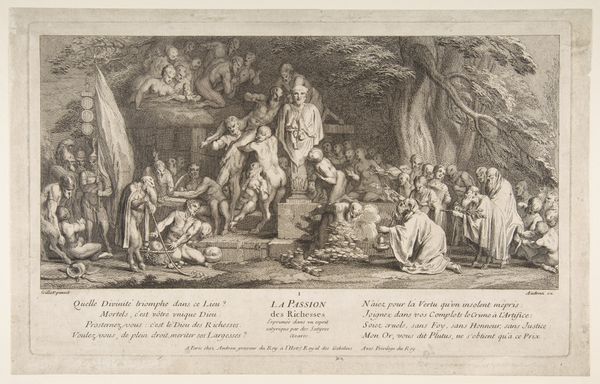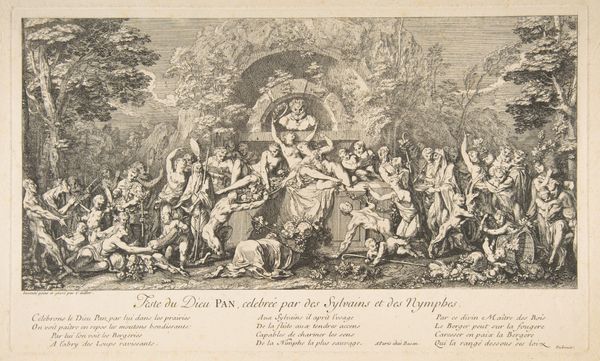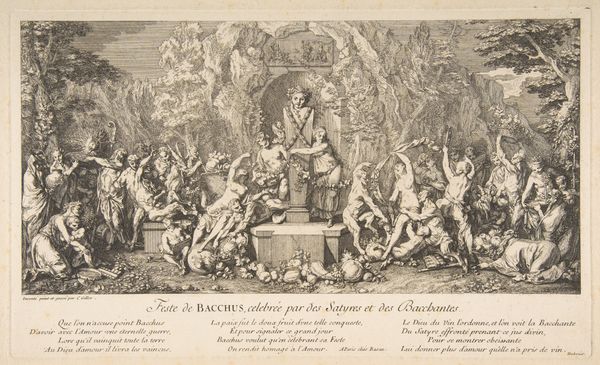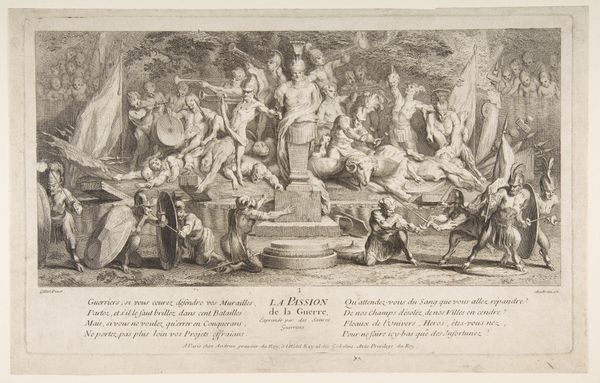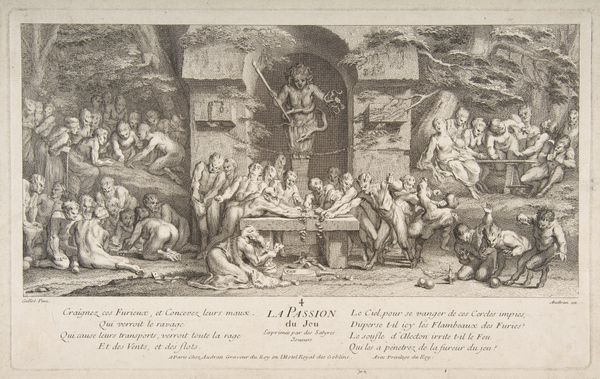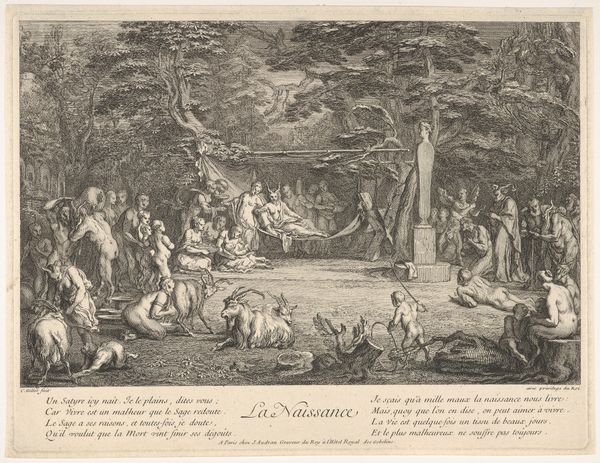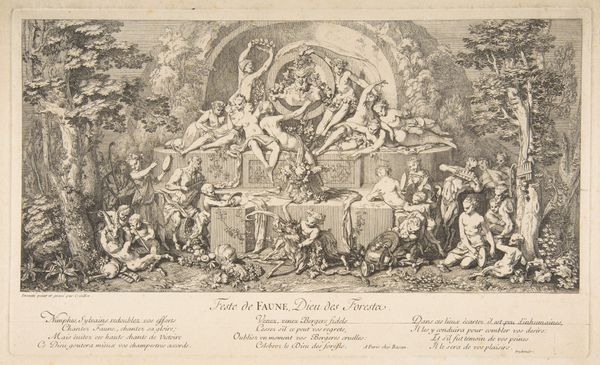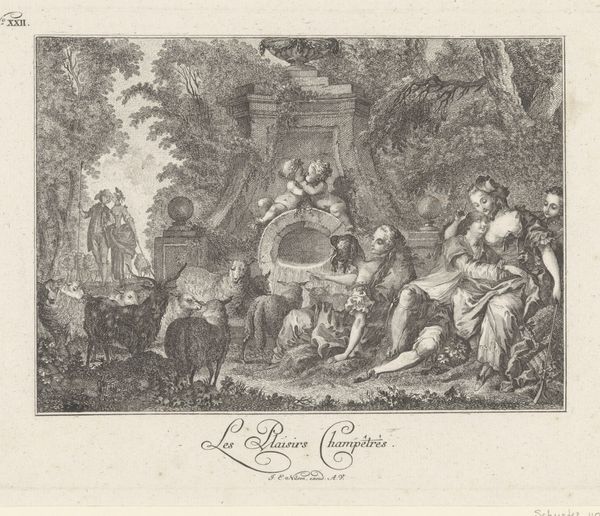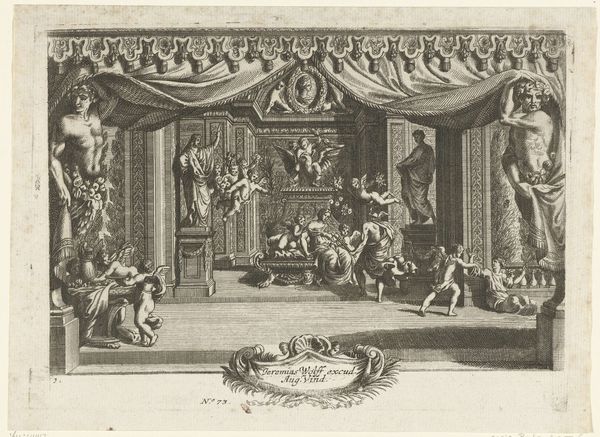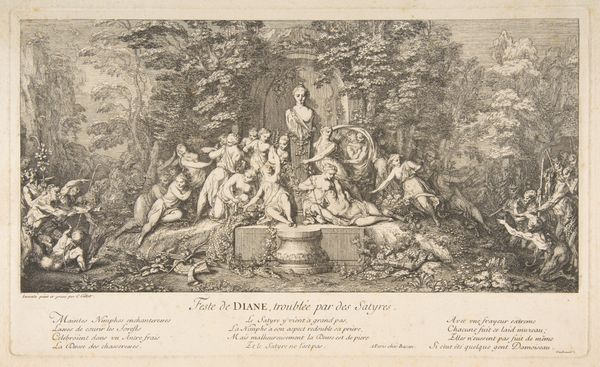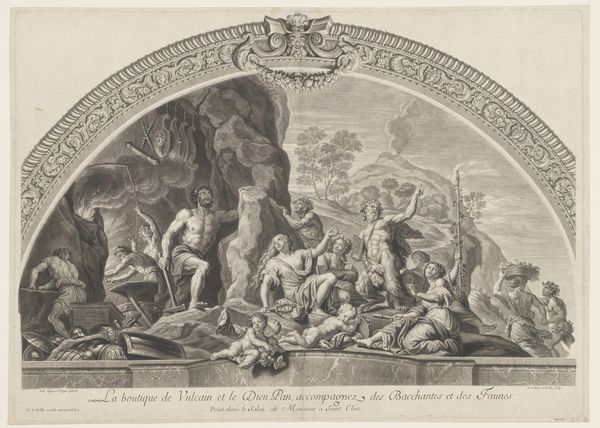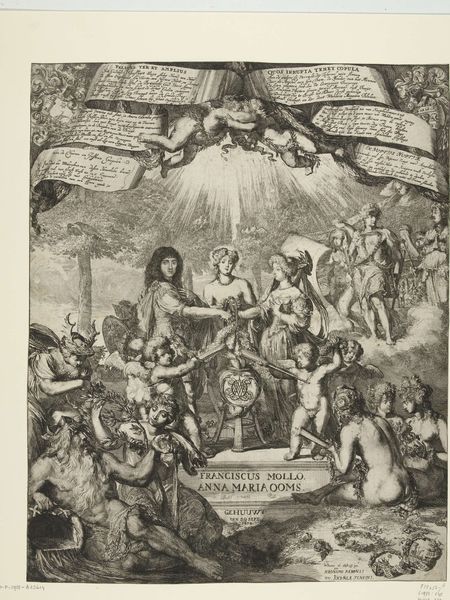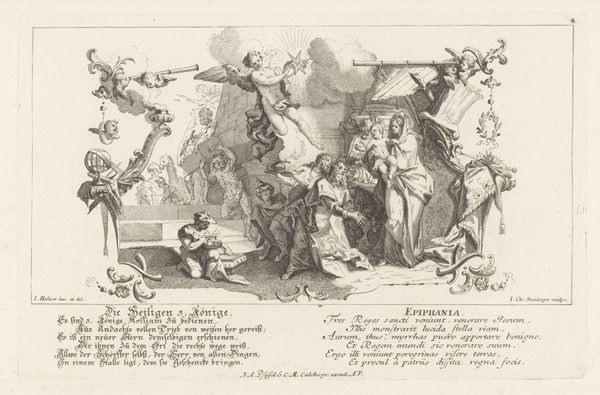
drawing, print
#
pencil drawn
#
drawing
#
toned paper
#
light pencil work
# print
#
pencil sketch
#
charcoal drawing
#
charcoal art
#
female-nude
#
cupid
#
pencil drawing
#
pencil work
#
pencil art
#
male-nude
#
watercolor
Dimensions: sheet: 9 7/16 x 14 3/4 in. (24 x 37.5 cm) image: 8 11/16 x 14 1/4 in. (22 x 36.2 cm)
Copyright: Public Domain
Curator: This is "The Passion for Love" by Claude Gillot, created between 1685 and 1722. It appears to be a print or drawing using pencil, charcoal and perhaps some watercolor on toned paper. Editor: It's amazing how much detail Gillot achieves with what looks like such delicate lines. It's a very busy composition, almost overwhelming. What stands out to you in terms of the formal elements at play? Curator: Observe how Gillot orchestrates this scene. The dense arrangement of figures, both individually and in groupings, serves to activate the surface plane, creating an area filled with textures that oscillate and visually reinforce one another. Notice that at the same time the lines, the subtle tonal variations achieved with the pencils and charcoal—these are not just descriptive, but constitutive of the artwork's emotional impact. It’s carefully designed for an aesthetic experience, right? What do you see happening with depth in this image? Editor: It's very compressed; the figures seem packed into a shallow space. The darker tones in the background are quite similar to the mid-tones in the front, which pushes the background forward, flattening the whole image. Curator: Precisely. And how does this flattening, this conscious manipulation of space, contribute to the overall effect? Editor: It intensifies the feeling of being overwhelmed, of being surrounded by "the passion of love", of too much happening at once... Perhaps even visually echoing the disorienting nature of passion itself? Curator: A compelling analysis. Do you think it lacks balance or would that balance harm the picture's expression? I would posit, rather, that by denying a more traditional Renaissance pictorial structure, Gillot embraces surface unity above all else. This is a fascinating work on so many levels. Editor: This has really changed how I see the drawing. It’s not just a depiction, it's a constructed emotional space. Thank you!
Comments
No comments
Be the first to comment and join the conversation on the ultimate creative platform.
